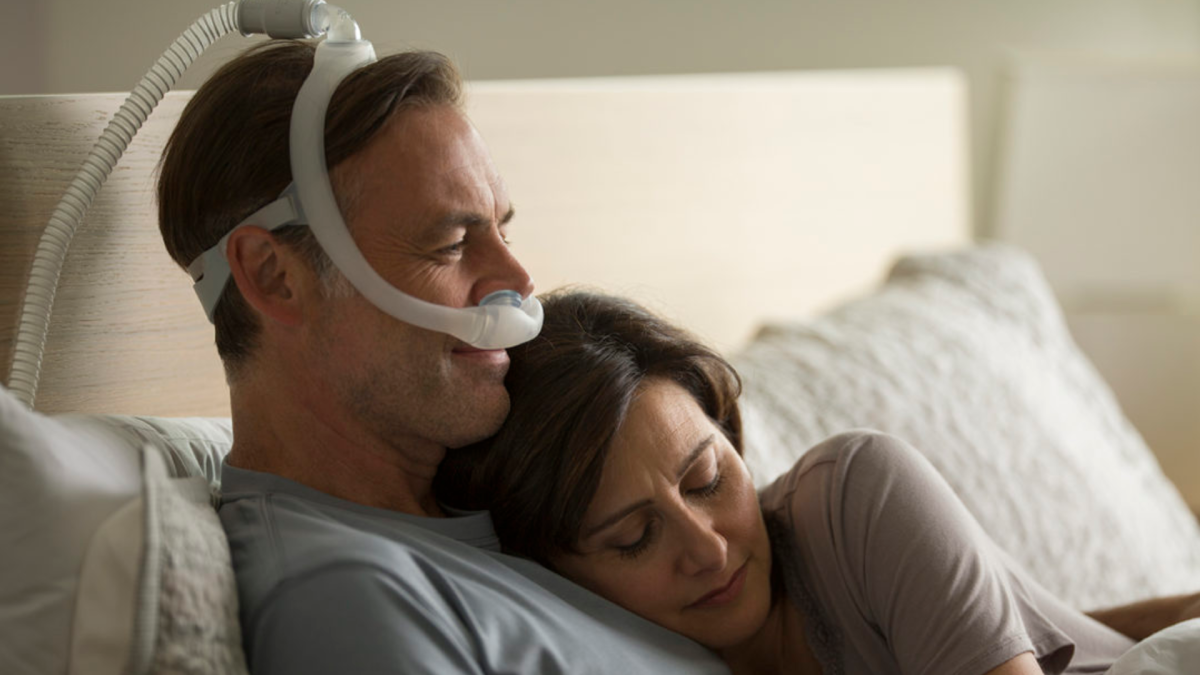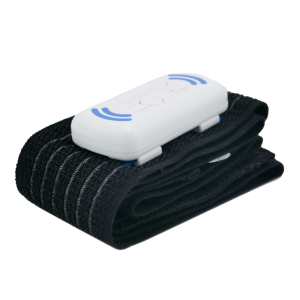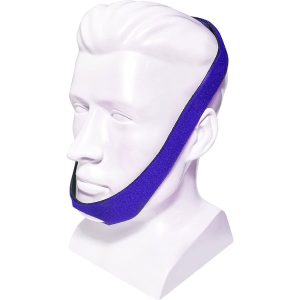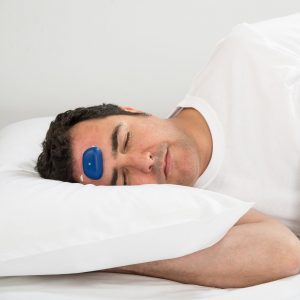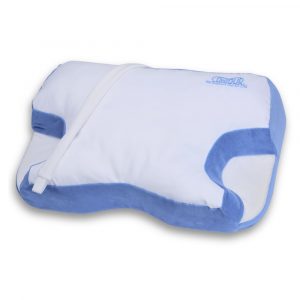Fact Checked
Intus Healthcare’s writers, customer service team, and sleep experts review and ensure this information is accurate.
Last updated on March 7th, 2024 at 10:40 am
How can I sleep better with Sleep Apnoea?
Your sleeping position can affect your sleep quality and reduce the amount you sleep with or without a sleep disorder.
The average adult needs at least seven hours of sleep every night, and your sleeping position could prevent this. Different sleeping positions have different benefits; gradually training your body to change sleeping positions can benefit your day-to-day life. Research shows that reduced sleep can increase the risk of diabetes, heart disease and mental health conditions(1).
For those with the sleep disorder Obstructive Sleep Apnoea (OSA), sleeping position plays a role in the intensity and number of breathing pauses throughout the night. This article will explain what sleeping positions are good and bad for your OSA.
How do you keep your airways open while sleeping?
Most people have a favourite or usual sleeping position, and you may not realise how you sleep can affect your airways and breathing.
Sleeping in certain positions can reduce the number of breathing pauses. Whether you sleep on your stomach, back or side, you could worsen your Sleep Apnoea symptoms without even knowing it. It is much easier to control your breathing whilst standing or sitting. When you lay down to sleep, your body is forced to breathe horizontally, where gravity pushes against your airways making controlling your breathing harder. To get the most from your OSA treatment, it is important to understand which sleeping position minimises your Sleep Apnoea.
Different sleeping positions to sleep better with Sleep Apnoea
So, what is the best sleeping position for Sleep Apnoea? Here are some tips on different sleeping positions for Sleep Apnoea:
Sleeping on your stomach
Sleeping on your stomach allows gravity to pull down your tongue and soft tissues, opening your airway.
Benefits of sleeping on your stomach:
- Reduces snoring
- Alleviates mild OSA
However, sleeping with a pillow or blanket covering your face can make breathing difficult. This position can increase discomfort if you suffer from neck or shoulder pain.
Tip – To make it more comfortable to sleep on your stomach, consider using a soft pillow and mattress to prevent your shoulders and neck from aching.
Sleeping on your side
Many people sleep on their side, which is one of the best positions to sleep if you have Sleep Apnoea.
Benefits of side sleeping:
- Sleeping on your left side helps to control OSA symptoms, encouraging blood flow and helping to open the airways.
- Left-side sleeping also encourages bowel movements, as it allows gravity to help with the process of moving waste through your ileocecal valve.
- Sleeping on your right side improves blood flow and helps keep your airway open.
- For those who suffer from gastroesophageal reflux diseases (GERD), heartburn and snoring, sleeping on your right or left side can reduce these.
A study on OSA and left-side sleeping found that sleeping on the left side reduced patients’ AHI (Apnoea Hypopnoea Index)(2). It also found that left-side sleepers experienced less severe Sleep Apnoea occurrences.
However, like every sleeping position, there is a downside, including shoulder stiffness, jaw tightness and lower back pain.
Tip – Place a pillow between your legs to help align your hips, reducing back pain.
Another option is a CPAP pillow; these pillows are designed with cut-outs for your CPAP mask to fall in when sleeping on your side.
The foetal position
The foetal position is a common sleeping position; it’s similar to sleeping on your side but with your legs curled towards your chest.
Benefits of sleeping in the foetal position:
- Reduces OSA airway blockages
- Reduces snoring
- Reduces or eliminates back pain
- Reduces or eliminates acid reflux and heartburn
The foetal position holds many benefits but is not recommended for those with shoulder pain as it puts pressure on the shoulder.
Tip – Place a pillow behind your back to prevent you from rolling onto your back.
What is the best sleeping position for OSA?
It all depends on your Sleep Apnoea severity, how you breathe during sleep and your chosen treatment method.
What position makes Sleep Apnoea worse?
The position that suits your Sleep Apnoea is individual to you and your body.
Sleeping on your back
Sleeping on your back is often considered less beneficial for individuals with obstructive sleep apnoea (OSA). Studies have found that sleeping on your back increases the frequency of breathing pauses and breathing restrictions (apnoea’s and hypopnoea’s)(3). Your tongue and soft tissue are easily relaxed when sleeping on your back, making airway obstructions and snoring more prominent.
Benefits of sleeping on your back:
- If you suffer from neck or back pain, sleeping on your back helps to relieve pain.
- It helps to align and protect your spine.
Tip – Placing a pillow under your knees can help to alleviate breathing pauses and support your spine when sleeping on your back. Alternatively, you can elevate your head to reduce sinus congestion and Sleep Apnoea discomfort.
Sleep Apnoea accessories to help your sleeping position
If you use a CPAP machine and other CPAP supplies, there are ways to accommodate your desired sleeping position.
Here are some tips:
Nasal Masks – Switching to a nasal CPAP mask (nasal pillows or nasal cushions) makes sleeping on your side or stomach easier.
Full Face Masks – Although some masks can be too bulky to accommodate sleeping in different positions, minimal-contact masks allow you comfortably move around in your sleep. The Evora full-face mask is designed to make side sleeping easier with dynamic support technology.
Read more here: CPAP masks for side sleepers.
CPAP Pillow – Using a full-face CPAP mask can narrow your sleeping position options. When you try to sleep on your stomach or side, you may find that your mask digs into your face, causing pressure marks and discomfort.
Adding a CPAP pillow allows you to sleep on your side; the cut-outs create a place for your mask to sit in to prevent marks and pressure.
CPAP Chin Strap – Adding a CPAP chin strap is ideal for you if you breathe through your mouth and use a nasal mask; it holds your mouth closed so you can still experience the benefits of a nasal mask.
Positional Therapy – A positional sleep therapy trainer encourages those with Sleep Apnoea to sleep on their side to reduce breathing obstructions.
Products to help you sleep comfortably
Round up
Choosing the best sleeping position for your Obstructive Sleep Apnoea works in unison with your Sleep Apnoea treatment.
Your sleeping position alone won’t control your sleep disorder, but lifestyle changes will benefit you.
Contact us to speak to our friendly team if you need any advice.
Helpful pages:
9 Common CPAP Machine Side Effects & How To Fix Them

